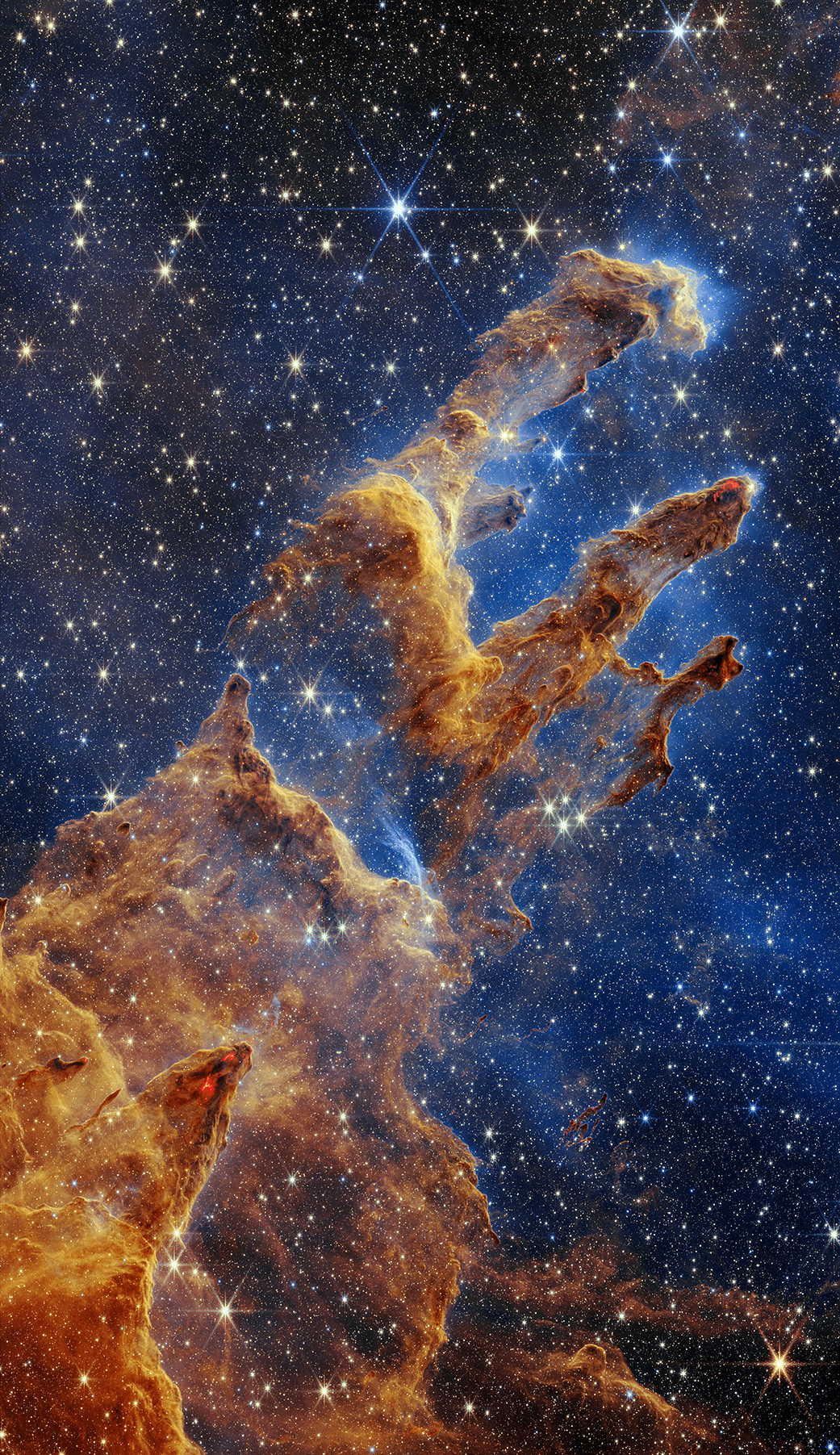The JWST has made it a huge year for astronomy research, but there’s been plenty of other big (and very, very small) news.
An Infrared Eye On The Universe
The wait was long, with more delays and cost overruns than anyone anticipated – but after finally launching last year, the JWST gently eased its way through the complex unfolding process. In July, its first results were announced, with five stunning images released to the world. Since then, it has been one major advance after another.
Probably the JWST’s most important achievements have been in its observations back to the dawn of time, seeing the earliest stars and galaxies. Indeed, some of the galaxies the JWST has found appear to have formed so soon after the Big Bang they may pose a challenge to the standard model of cosmology. Whether this will require a fundamental overhaul of our ideas about the early universe, or just some more accurate dating, remains to be seen.
The most powerful space telescope ever launched has also transformed our view of objects within the Milky Way, and even within our own solar system with its unique views of Jupiter and Titan. Its early observations of the TRAPPIST-1 system, containing at least seven rocky worlds, some within the habitable zone, teases the possibility of even greater discoveries to come.
The Pillars of Creation star forming region looks like a hand reaching to catch the stars in this JWST image.Image Credits: NASA, ESA, CSA, STScI; Joseph DePasquale (STScI), Anton M. Koekemoer (STScI), Alyssa Pagan (STScI).
Particles Inside Particles
Although the heavens were hogging attention, a lot happened in subatomic science this year. Ten years after the discovery of the Higgs Boson using the mightiest machine on Earth, much more modest devices revealed a related quantum excitation, known as the axial Higgs mode.
Evidence also emerged for a mysterious fourth type of neutrino. However, for the mind-bending “that can’t be right” feeling we have all come to know, and in some cases love, from quantum mechanics, it’s hard to go past the discovery protons contain quarks heavier than the proton itself.
Safety From The Skies
The Earth may have become a more dangerous place through human activities like war, but this was a year for progress in fending off external threats. NASA’s Double Asteroid Redirection Test (DART) proved it was possible to substantially change an asteroid’s orbit by slamming a spacecraft into it, shortening Dimorphos’s orbit around the larger asteroid Didymos by a better-than-expected 32 minutes.
The work gives us a potential tool for when we discover asteroids large enough to do serious damage on a path to Earth. However, to deal with incoming threats, we need to be able to detect them – and there was progress on that front this year as well. In November, a small asteroid burned up over Canada, something that has happened billions of times before. This time, however, NASA picked it up beforehand, and predicted its impact location, at least to the continent.
We also found three potentially hazardous asteroids hiding in our planetary blind spot – the glare of the Sun – including the largest new detection in eight years.
Then again, humanity seems determined to make up for any threat we can eliminate, with yet another Long March rocket crashing back to Earth in an uncontrolled re-entry.
Fusion Is Coming… Eventually
After decades of promises, substantial advances were made towards controlled nuclear fusion becoming a viable energy source. In September, The Korean Superconducting Tokamak Advanced Research device proved it could make the 100 million °C plasma used in most fusion research more pure and stable than had previously been managed. It is hoped this will allow ITER, currently under construction, to demonstrate the viability of a commercial fusion plant.
Then, in December, the National Ignition Facility announced they had fired lasers at deuterium and tritium isotopes of hydrogen to make them fuse, releasing more energy than the lasers supplied.
Unfortunately, these developments were widely reported in ways that could lead people to believe practical fusion is closer than it is. Although the NIF produced more energy than was delivered by the lasers (for less than a billionth of a second), there are enormous inefficiencies both in powering the lasers and in converting the heat output to electricity. Producing enough electricity to make the system self-sustaining, let alone power a city, is still decades away.
We’re Really Going Back To The Moon… And Maybe On
Politicians have been talking about humans returning to the moon for decades, so it’s easy to be cynical. However, the successful Artemis I mission shows it’s finally going to happen. Although many robot craft have been sent to orbit or land on the Moon since the last Apollo mission in 1972, Artemis is different.
The Orion spacecraft that completed its mission last week is capable of carrying humans safely, and is scheduled to do so in eighteen months’ time. There’ve been plenty of delays in the process, and there will probably be more, but there now seems little doubt astronauts will perform a lunar flyby soon. After that, landing is planned for 2025, which should set the stage for long-term bases capable of extended research, finally taking up where Apollo left off.
Source Link: The Top Five Space And Physics Stories Of 2022
